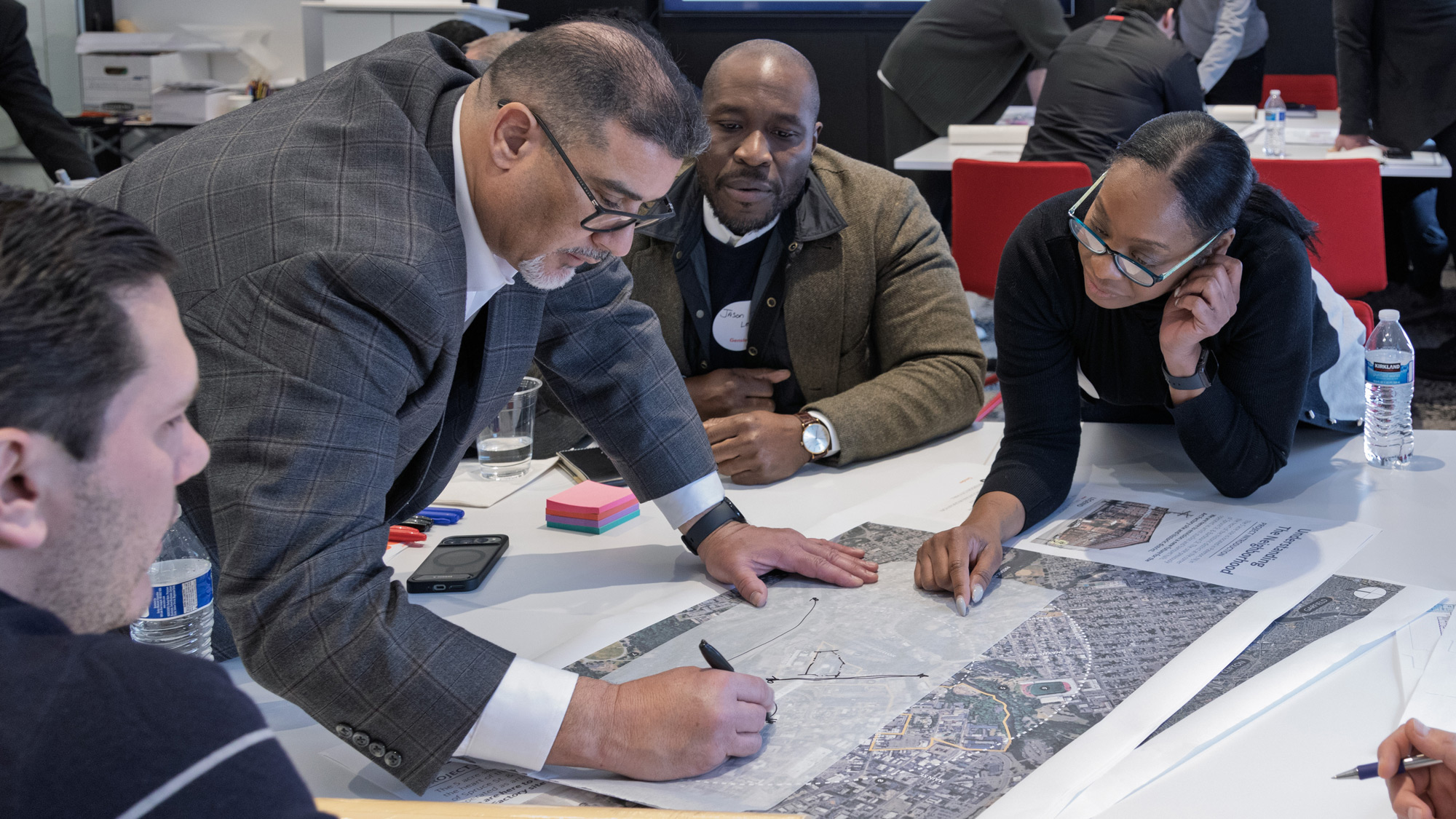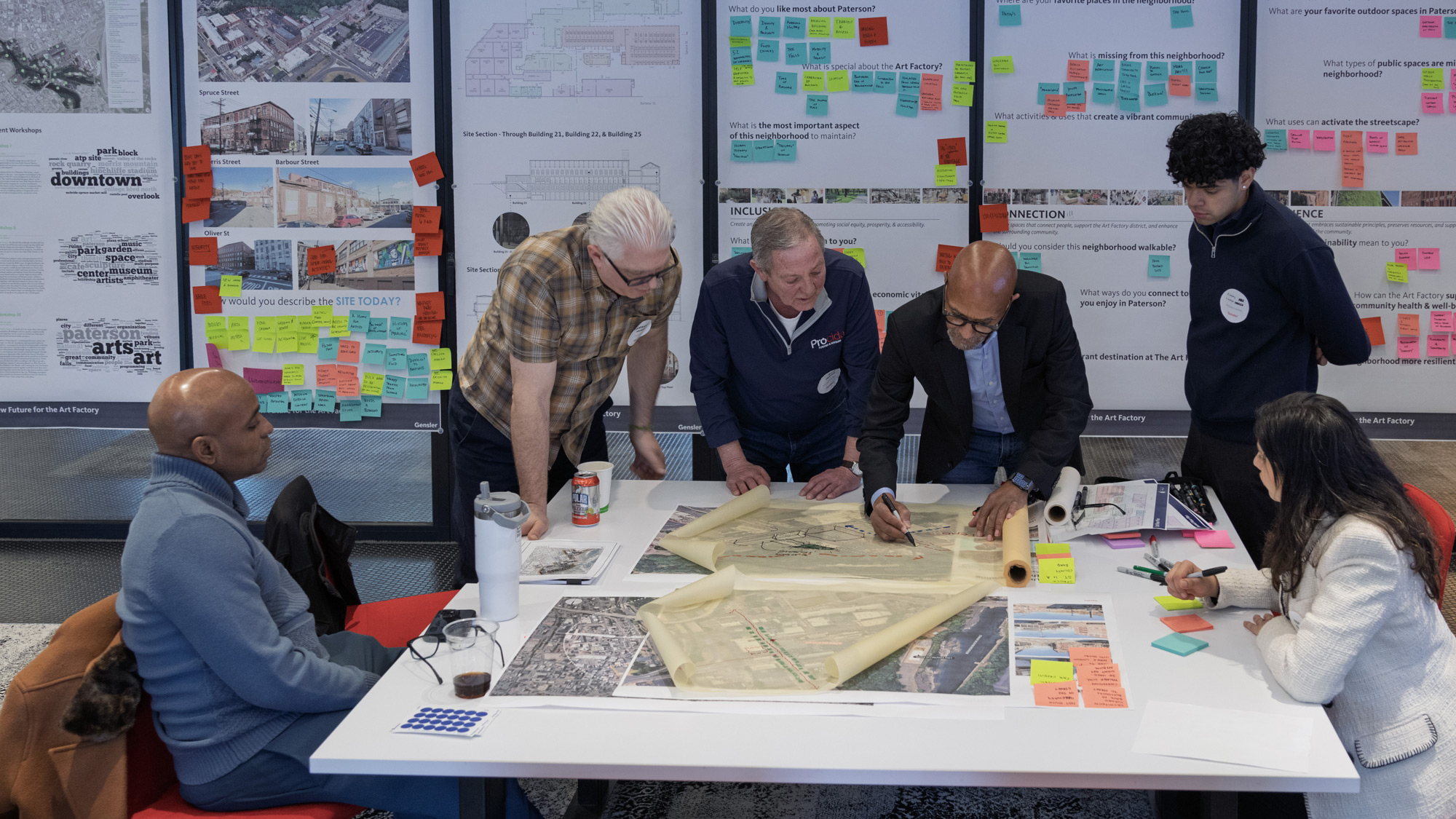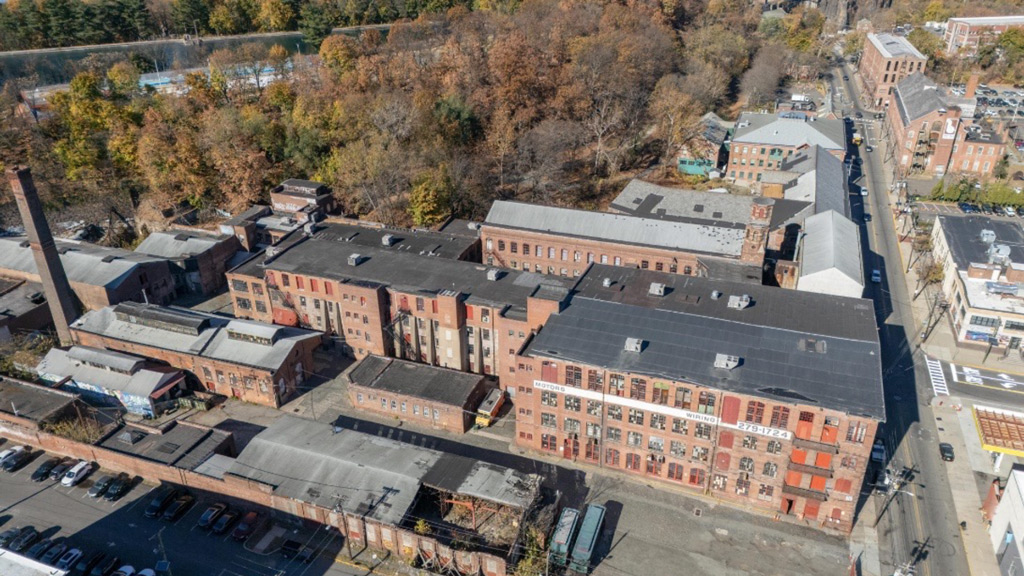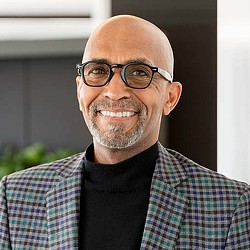Imagining a New Era for New Jersey’s Historic Art Factory
April 16, 2025 | By Roger Smith and Eric Bieber
Over the last five years, adaptive reuse projects have experienced a significant uptick with investors recognizing the role they can play in solving the supply and demand issues that have plagued various sectors, including residential, healthcare, and industrial.
Embedded within a historic preservation district in Paterson, New Jersey, the Art Factory’s 19th century buildings hold more than 180 years of history as one of the most prolific textile mills in the United States. In recent years, the site housed artist studios, event spaces, and film production, but many of the historic industrial buildings have fallen into disrepair. Today, the Art Factory is prime for a revitalization that preserves its character while serving the needs of a modern-day city.
To that end, Gensler’s Morristown office recently hosted a design charrette with Paterson's community and business leaders to imagine a new future for the Art Factory complex, a five-acre site spanning 230,000 square feet across 21 buildings near Great Falls National Historical Park.
Together with local real estate investor, Procida Funding & Advisors, Gensler facilitated a series of sessions with local historians, developers, non-profits, city officials, planners, and stakeholders to better understand the site and its history, and to brainstorm new possibilities for the development. Gensler led the charrette through the lens of various community impact principles including preservation, inclusion, placemaking, connection, public space, and resilience.
Participants explored opportunities to transform the site into a vibrant, accessible, and community-focused destination with an aim of ensuring the future development reflects the neighborhood’s authenticity, character, and evolving needs for current residents.
This was just the first step in what will be a community-driven process in reimagining the Art Factory development. It was incredible to see the power of collaboration on display with participants enthusiastically sharing their ideas and aspirations for the site.

The Art Factory was originally built in the mid-1840s as the American Hemp Company, but most recently was a prominent creative center that fostered a community of artists, musicians, and creators with event spaces, performance venues, art studios, and workshops. With this in mind, stakeholders identified key principles that should guide the redevelopment and design of the Art Factory:
- Preserve the history of the Great Falls neighborhood while promoting the reuse of existing structures and maintaining Paterson’s aesthetic character.
- Create an inclusive development by promoting social equity, prosperity, and accessibility for all.
- Establish a dynamic destination for residents, tenants, visitors, and the broader Paterson community that includes amenities like maker spaces, recreation spaces, and restaurants.
- Design spaces that connect people, support the Art Factory district, and enhance the surrounding community, such as ground floor retail, wayfinding, and new public gathering spaces.
- Design the site to prioritize the pedestrian experience and create spaces for the public with parks, courtyards, gardens, and amphitheaters.
- Create a resilient design that embraces sustainable principles, preserves resources, and supports the health and well-being of the community through use of solar energy and the creation of programmed outdoor space and fitness amenities.
Over the course of the afternoon, stakeholders participated in sketching sessions, which helped illustrate the location and potential of these themes: artist housing, entertainment hubs, mixed-use retail, and dining.
Paterson is steeped with a rich cultural and geographic history, which strengthens the Art Factory as a critical landmark for revitalization and preservation.

Participants agreed that the Art Factory plays a crucial role in Paterson’s ongoing story of industry, innovation, and immigration. Together, with an emphasis on the human experience and community voices at the table, the Art Factory is poised to become a hub of economic prosperity that celebrates the arts and connects all who live and visit the city.
For media inquiries, email .


